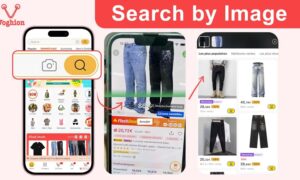Lead generation is one of the most important elements of increasing sales for ecommerce businesses. For many ecommerce businesses, a lot of traffic and potential leads are lost in their sales pipeline. This generally results in decreased ROI on marketing campaigns and less revenue for the company. There are numerous ways that ecommerce businesses can improve their lead generation efforts and close more sales. In this post, we will explore five of the best strategies you can start deploying now to increase your lead generation process. The best strategies include:
1. Use chatbots:
Chatbots are one of the most underrated tools when it comes to capturing leads for ecommerce businesses. Ecommerce businesses are losing hundreds if not thousands of leads every month by not having a chatbot on their website. When a customer lands on an ecommerce site, they typically are looking for a specific product or have a question. If they cannot find it easily on the page, they will typically leave the site. This ultimately leads to a missed sale for the business. With a chatbot, you can capture the majority of customers who land on your website. A chatbot appears and asks the customer what they need help with and it can capture their contact information. This allows you to get back to them and aid them in their search for a product.
By integrating chatbots into your site, you can get more leads from your existing audience and leverage marketing automation. Chatbots are not just generic conversational tools, they can be customized to fit the needs of your business. You can work with a chatbot provider to create the perfect chatbot that is tailored towards your customers’ needs. This will allow you to automate a lot of the frequently asked questions and you can focus on important leads that lead to real sales. Also, a chatbot works for your site 24/7. It can capture all of the questions and inquiries and you can answer them with your customer support team when you return to your office.
2. Email marketing:
Email marketing is a very popular marketing channel for ecommerce businesses and it’s also a great way to increase the leads for your business. Email marketing allows you to market your services and products to an audience that has opted in to your emails. Since your audience willingly joined your email list, they are some of the best potential leads for what your business offers. You can send automated emails and custom campaigns to different segments of your email list to improve your lead generation. Email marketing is a great medium to inform your customers about new products, news about your business and any upcoming promotions.
The use of segmentation in email marketing is a great way to make lists of leads and target them personally. Since you have access to your email list, you can make a list of leads that are businesses and target them differently in comparison to your normal B2C customers. Your email list allows you to see the first name and email address of your recipients. You can make a list of the ones that use company emails and target them with more bulk sales. This is a great example of how you can use email marketing to generate more leads for your business.
If your list has been generated by finding email addresses of your prospects, make sure to verify the email addresses before sending the emails.
3. Write SEO-optimized content:
Most marketing methods require you to pay to get leads. The more leads you get, the more you typically will pay. One of the few marketing strategies that allows you to have scalable organic leads is SEO. With SEO, you can rank organically on search engines for a keyword and bring in free organic traffic to your website every month. This allows you to gain more leads and reduce your marketing costs. The better your SEO is for your ecommerce business, the more organic visitors and sales you will ultimately generate.
Your main focus for SEO should be to write SEO optimized content. Your business should target keywords that your customers are searching for and write helpful content around that. The more content you have around a specific topic, the more topical authority you will have and this will help you rank higher in search engines. Additionally, take some time to make sure all of your on-page SEO is optimized. This includes your headings, titles, meta descriptions and more.
It’s important to note that you need to do proper keyword research to maximize your SEO. You’ll need to either manually do keyword research or use keyword research services. The main goal of doing keyword research is to target low competition keywords, so your site can start ranking easily. Even if you have great content, some keywords are extremely hard to rank for. Keyword research allows you to see how difficult it will be for your site to rank and what keywords you should start targeting. For example, if you’re doing B2B SEO, you should do thorough keyword research to ensure that you target what your customers are looking for. This will help inform your content strategy and help you start getting traffic for your site easier.
4. Leverage social media:
Social media is an indispensable tool for lead generation for most ecommerce businesses. With social media, you can gain one of the biggest competitive advantages for your ecommerce business: branding. Branding allows your ecommerce business to set higher prices, earn more net profit and differentiate yourself from competitors. With branding, you can slowly build up organic sales over time and reduce your advertising expenditure. A social media influencer agency can be a strategic partner in amplifying your brand’s reach and credibility. Additionally, the upfront cost of using social media is $0. You can use ads to increase your audience reach with paid advertising on social media platforms.
The social media that your business uses will largely depend on the products you sell. For many physical products, platforms like TikTok, YouTube and Instagram work extremely well. On these platforms, you can review products, target keywords and take advantage of the viral network effects. Platforms like TikTok in particular have extremely strong network effects. You can take advantage of current trends and couple that with hashtags to target your ideal customer demographic. Additionally, you can leverage automation tools to get leads. For example, if you primarily use Instagram as your platform, you can use Instagram automation to outreach to any of the potential customers you follow. This will allow you to build rapport and eventually sell your services.
5. Paid advertising:
Paid advertising is a proven method to increase leads for ecommerce businesses. The vast majority of ecommerce businesses rely on paid advertising to bring traffic to their stores. Unless an ecommerce business has a strong online presence, the only way customers typically will find it is through paid advertising. Although paid advertising is generally effective for most ecommerce businesses, it can be cost-ineffective if done incorrectly. You need to carefully craft a strategy that outlines which paid advertising platforms (Google, Facebook, etc.) you will be using and what type of ads you will be running.
With paid advertising, you need to have a proven sales pipeline to make the most use of your advertising dollars. This means you need to know every step and minimize friction for the customer from the time they click on an ad to the time they make a purchase of a product. Additionally, you need to optimize your campaign by making sure you’re targeting the right keywords and that you’ve optimized your landing pages. This will help significantly with your conversions and ultimately lead to more sales.
These five methods are just some of the ways that your ecommerce business can start getting more leads. Using one or a combination of these methods will help you maximize your current audience and bring in more visitors and leads to your site. A quick way to get started with lead generation is to start using chatbots. To learn more about how you can leverage chatbots to get leads, get a free demo here.



































